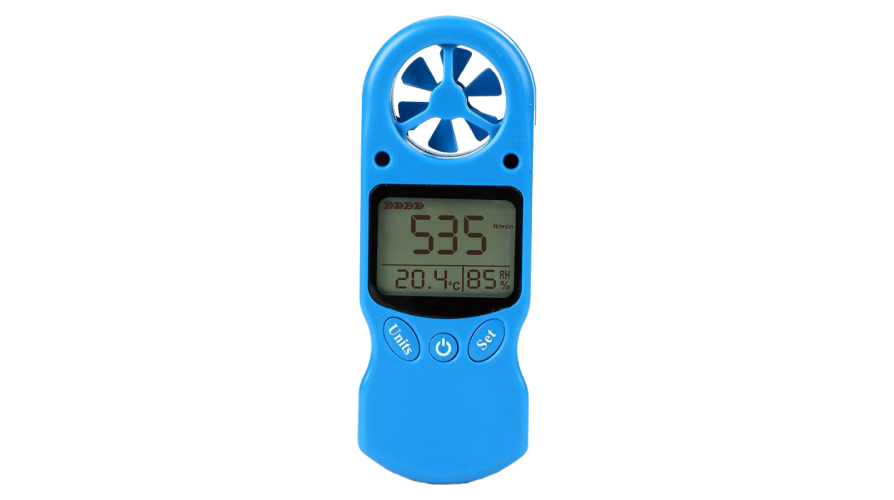How an Anemometer Can Enhance Your Weather Surveillance System
Exploring the Functions and Benefits of Anemometers for Weather Condition Enthusiasts and Professionals
Anemometers stand as important tools in the realm of weather condition monitoring, catering to both fanatics and seasoned professionals alike. These devices offer a window right into the vibrant globe of wind patterns and rates, supplying invaluable data for atmospheric evaluation and projecting. From cup anemometers to sonic anemometers, each type brings its unique collection of applications and benefits, clarifying various aspects of climatic problems. As we delve right into the features and benefits of anemometers, a deeper understanding arises not only of dominating climate sensations however also of the broader effects for markets like wind energy manufacturing and ecological research study.
Relevance of Anemometers in Weather Condition Surveillance
Anemometers play an important role in weather condition monitoring by giving precise dimensions of wind rate, helping in projecting and understanding weather condition patterns. These tools, ranging from typical cup anemometers to modern-day ultrasonic anemometers, are crucial for meteorologists, researchers, and climate enthusiasts alike. By determining wind rate, anemometers help in figuring out the strength of climate phenomena such as tornados, storms, and twisters. Furthermore, they provide valuable information for aviation, maritime operations, and different sectors that are delicate to wind problems.

Kinds Of Anemometers and Their Applications
The most usual types of anemometers consist of cup anemometers, vane anemometers, hot-wire anemometers, and ultrasonic anemometers. Mug anemometers are composed of 3 or four cups installed on straight arms that turn with the wind, measuring its rate. Vane anemometers, on the various other hand, use an easily revolving vane to line up with the wind instructions, giving both wind speed and instructions measurements.
Each kind of anemometer has its distinct benefits and applications. Cup anemometers are ideal and robust for basic weather surveillance, while vane anemometers are favored for directional dimensions. Hot-wire anemometers are delicate to reduced air speeds, making them optimal for interior environments. Ultrasonic anemometers are non-intrusive and use high accuracy, commonly utilized in research and specialized weather condition surveillance applications. Understanding the features and applications of each sort of anemometer is important for picking one of the most proper tool for specific weather condition monitoring requirements.
Benefits of Making Use Of Anemometers in Projecting
In meteorology, the usage of anemometers uses vital benefits for improving the accuracy of weather projecting. Anemometers gauge wind rate and instructions, offering important data for predicting weather condition patterns. By integrating wind data right into projecting designs, meteorologists can better understand the motion of weather condition systems, expect modifications in atmospheric problems, and concern a lot more accurate projections.
In addition, anemometers play an important function in analyzing potential weather threats. Keeping track of wind rates helps forecasters forecast serious weather events such as cyclones, hurricanes, and winter months tornados with higher accuracy. This early caution system allows authorities to issue timely signals and execute required safety steps, decreasing the dangers to life and residential property.
Furthermore, anemometers help in optimizing eco-friendly power manufacturing. By analyzing wind patterns, meteorologists can recognize suitable places for wind ranches and forecast power outcome, contributing to the efficient generation of wind power.

Anemometers in Wind Power Production
Offered the critical duty anemometers play in offering precise wind information for weather condition forecasting and risk assessment, their importance expands to the world of wind power production. Anemometers are important instruments in he has a good point the area of wind energy, where the dimension of wind speed and direction is essential for establishing the usefulness and effectiveness of wind generator installments. By properly measuring wind rates at differing heights, anemometers help optimize the placement and layout of wind generators to optimize energy outcome.
In wind ranches, anemometers are tactically positioned to collect real-time wind information that is utilized to evaluate the prospective power manufacturing of a website. This information is crucial in establishing the economic viability of wind energy jobs and in forecasting energy generation to guarantee grid stability. In addition, anemometers aid in keeping track of wind conditions to enhance turbine performance, prevent damage from high winds, and make certain the safety and security of workers working in the vicinity of wind turbines.
Enhancing Weather Condition Understanding With Anemometers

Anemometers play an essential function in improving our understanding of microclimates. These local weather condition problems can differ dramatically from more comprehensive local forecasts, making it crucial to have precise data for particular areas. anemometer. By strategically positioning anemometers in various locations, researchers can collect comprehensive info on exactly how wind behaves in different surfaces, city atmospheres, or bodies of water
Moreover, anemometers add to enhancing weather forecasting versions by offering real-time information on wind actions. This info is specifically beneficial for forecasting serious weather occasions, maximizing agricultural practices, and sustaining markets like air travel and maritime navigating. In general, anemometers are very useful tools that allow us to dive much deeper into the intricacies of climate systems, eventually leading to even more better-informed choices and exact forecasts.
Verdict
In conclusion, anemometers play a vital duty in climate surveillance and forecasting by measuring wind speed and instructions. Anemometers additionally have applications in wind power manufacturing, additional highlighting their value in both meteorology and sustainable power industries.
From cup anemometers to sonic anemometers, each kind brings its distinct set of applications and advantages, shedding light on numerous facets of atmospheric conditions. These instruments, ranging from conventional mug anemometers to modern ultrasonic anemometers, are important for meteorologists, scientists, and weather enthusiasts alike. The most usual kinds of anemometers include cup anemometers, vane anemometers, hot-wire anemometers, and ultrasonic anemometers. Cup anemometers are robust and ideal for basic weather surveillance, while vane anemometers are preferred for directional useful reference dimensions. Anemometers are necessary tools in the area of wind energy, where the measurement of wind rate and instructions is important for determining the expediency and performance of wind generator installations.